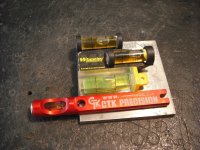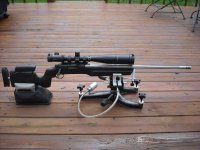Jimmy, I have several bubble levels that I have purchased for leveling scopes and I don't think any two of them agree. Then you hope the rail,, scope turret ,, scope base , that you are sitting the level on is flat and level and repeatable.
The method I use,, is a piece of orange para cord with a weight hanging on the storage building about 30 or 40 yards away.
Level the rifle with your best / repeatable level. Then line the vertical crosshair of the scope up with the hanging para cord.
Then line the scope anti-cant level with the crosshairs and the para cord. I like the Wheeler ,, but there are several other types and brands.
Wheeler Engineering Anti-Cant Indicator Hinged Matte
I figure gravity still works and knows which way is straight up.

( edit: a way to check your work,, on a big target shoot a 3 shot group,, adjust 10 or 15 MOA of vertical into the scope ,, and reshoot,, second group should be straight up ,, if it drifts left or right.. go back to square one..


)


